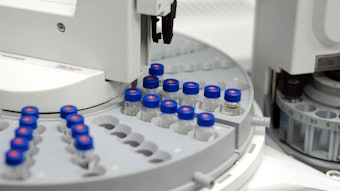The major function of skin, thanks to its stratum corneum location, is to prevent desiccation and protect against environmental hazards such as bacteria, chemicals and UV radiation. In addition to this primary role as a barrier, the skin is a metabolically active tissue that contains enzymes able to metabolize not only endogenous chemicals such as carbohydrates, lipids, proteins and steroid hormones, but also xenobiotics. Being the largest organ of the body, the skin is exposed both acutely and chronically to a wide variety of xenobiotics, either unintentionally through environmental pollutants or intentionally through drugs and cosmetics.
When xenobiotics contact the skin, lipophilic compounds are converted into more polar, water-soluble compounds. However, the role of this conversion in the absorption process is yet unknown, and understanding these mechanisms is important to understanding their impact on topical delivery. Therefore, the authors sought to develop a method to characterize these metabolic effects on absorption.










